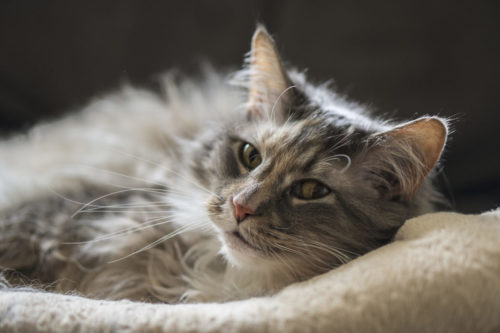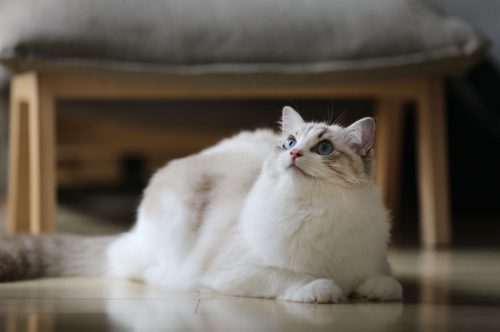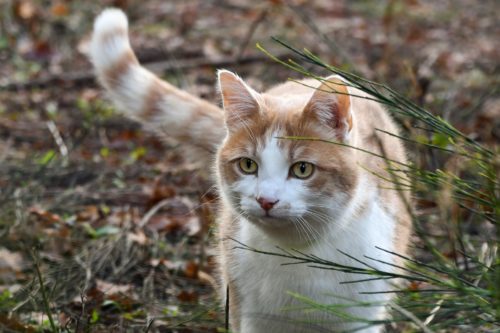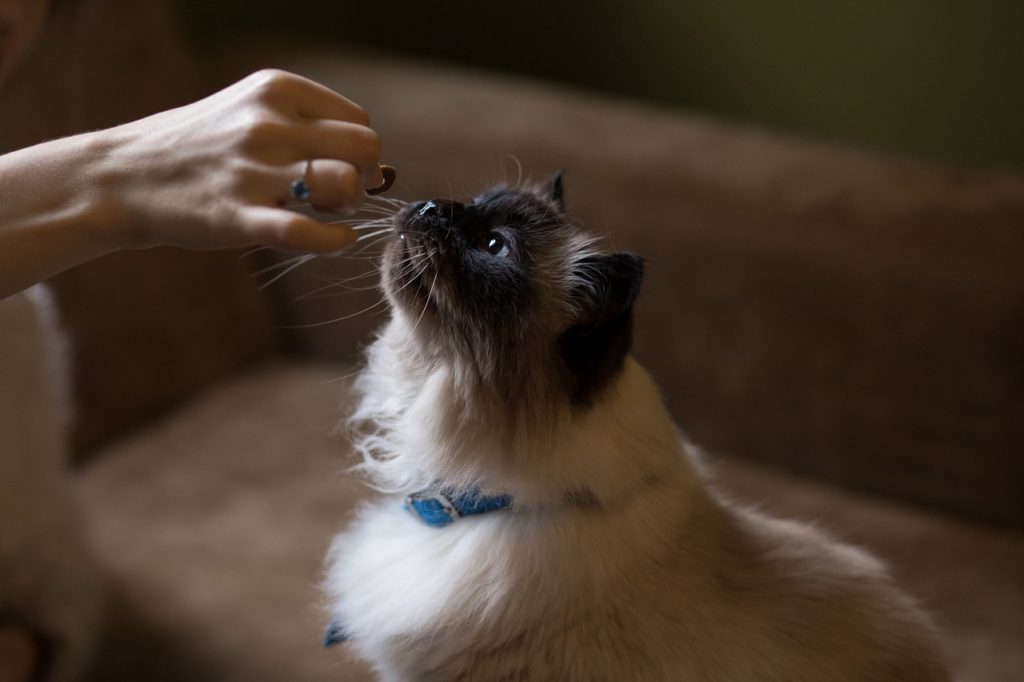If you own a furry feline, you probably already know how low-maintenance these pets really can be. Without having to go on daily walks or giving them loads of attention, cats can almost take care of themselves completely on their own. You don’t even have to bathe them since they already do that job for you! As you can see, it’s no surprise why so many people consider themselves a cat person.
However, when owning a cat, you still have the important job of feeding them. Although this may seem like a simple job, what you feed your furry friend can have a major influence on their overall health as they age. That means it is imperative you are feeding them a nutritious and well-balanced diet from the very beginning.
If you are concerned about your cat’s overall well-being (as you should be) and want to learn more about cat nutrition tips, continue reading this article below. This cat nutrition checklist highlights all necessary components that should be included in your cat’s diet and explains why each is important to maintain a healthy body. As always, if you have any further questions regarding your specific pet it is always recommended to consult with your veterinarian.
These tips below will help you find the right food product for your cat while shopping at your local store. You should always be looking at the food label before purchasing any product to make sure it has all the essential components that make up a healthy cat food product.
What Nutrients Should Be Included In My Cat’s Diet?
Did you know that cats and dogs have different nutritional needs in order to sustain proper health? In fact, depending on the cat’s age, they may also require different properties in their diet to support their current physical condition and age. As a general rule of thumb, these are just the main ingredients that should be listed in your cat’s food. Keep in mind the amount of each component may vary from cat to cat depending on their age and physical state.
Your cat should be able to acquire all their necessary nutrients through the food they consume. These nutrients not only help support regular body functioning but also provide the animal with an energy source to go about their day. On today’s market, commercial cat food companies consider these nutrients when formulating their products to make sure animals are getting at least the minimum requirements of each nutrient. Below are the main components that should be included in your cat’s diet.
Protein
Cats are naturally carnivores, meaning their bodies require meat to survive. Even though this should not be the only source of energy in their diet, it still serves as the foundation to their nutritional needs. Cells, enzymes, tissues, and many other components in our bodies depends on protein to grow and survive.
Protein also contains amino acids which are required for developing and repairing tissue while also regulating the metabolism. Since a cats body breaks down amino acids at a faster rate than most animals, they need more protein to sustain a healthy body. Protein can be found in both animals products and other vegetarian options but is most nutritious as an animal protein.
When it comes to amino acids found in the protein, there are two different types: essential amino acids and non-essential amino acids. Essential amino acids cannot be created in the cat’s body, which means it has to be consumed through their diet. A few common essential amino acids include histidine, threonine, leucine, lysine, and arginine. When it comes to non-essential amino acids, these components can be synthesized in the cat’s body on its own.
As we had mentioned early, cats require different diets for supportive nutrition. An example of this is kittens and nursing cats need a higher amount of protein compared to middle-aged felines. Once a cat has reached ten years of age, it is also crucial that they are fed a high-protein diet because their bodies have a more difficult time metabolizing protein.
Fats
After protein, the next highest nutrient in a cat’s diet should be fat. While this may seem strange at first, fat provides the largest source of energy, even more than protein or carbohydrates. Fat also helps to break down fat-soluble vitamins that are essential for a feline’s body, including vitamins K, A, D, and E. This component is also needed in the body because it protects the internal organs and serves as an insulator as well.
Omega-3 and omega-6 fatty acids are two critical components that cats are unable to create in their body themselves, which is why they need to consume fat in their diet. These fatty acids are used to help with inflammation, whether the inflammation is in the kidneys, intestines, skin, or another area of the body As a general rule of thumb, an adult cat should consume about 15-20% of fat within their diet and about 20% when they are a kitten.
If your cat is fed over his recommended amount of fat, he will be at a higher risk of becoming overweight. Once this health problem occurs, it can be hard to reverse its side effects. Prevent feline obesity or other weight problems by making sure your cat is being fed the proper amount of fat in his diet no matter what stage of life he is currently in.
Carbohydrates
Carbs are where the diet of cats and dogs differ. Dogs require a substantial amount of carbohydrates in their diet, whereas cats do not. As said earlier, cats are carnivorous animals and thrive on an all-protein diet. While carbs do have the benefit of adding fiber and an energy source to a cat’s food, if they overeat, they will not be able to efficiently process it in their body, causing them to gain weight.
This puts the cat at a higher risk of developing feline diabetes and other weight problems down the road. When shopping for your cat’s food, try to find one that contains 3-5 % of carbohydrates. Generally speaking, wet food is known to have fewer carbs than dry food. If you are looking for a specific product that is low in carbs, ask your vet for further recommendations.
Minerals

Just like with all living people and animals, minerals are an essential component needed for supportive health and vitality. Some of the most common jobs minerals are known for includes enzyme formation, nutrient dispersion, transportation of oxygen, and balancing pH levels in the body. Minerals also help with the formation and development of bones and cartilage and the production of hormones.
There are two different categories of minerals: micro and macro. As the name suggests, macro minerals are elements that are needed in larger quantities such as calcium, potassium, and magnesium. On the other hand, micro minerals are only required in smaller amounts which includes iron, copper, and zinc. These minerals have to be in an animal’s food source for them to be able to metabolize them.
Vitamins
Vitamins are another critical component required in a cat’s system. Aside from promoting growth, vitamins are also needed for regulating metabolism. Vitamins are categorized into two separate categories including fat soluble and water soluble. Generally speaking, fat-soluble vitamins can stay in the body for longer while water-soluble vitamins are flushed out more quickly. Many sources of these essential vitamins have to come from their meat-based protein source.
If you see a vitamin or mineral supplement at the market, talk to your vet before purchasing this product. Most professionals will say that an added supplement is quite unnecessary, especially if your cat is consuming a wholesome and nutritious diet already. In fact, sometimes these supplements can do more harm than good by creating an oversupply of a particular vitamin.
Water
Last but certainly not least, water is an essential component that is crucial for any cat diet. Although cats are not the biggest water drinkers, it is still essential to have a bowl of fresh water readily available at all times. Water is needed in the body to regulate temperature, flush out any waste products, lubricate joints, and to also transport oxygen throughout the body. If a cat does not drink enough water, their urine will become too concentrated, potentially leading to a more severe urinary issue. Aside from this, they are also at a high risk of becoming dehydrated, which can lead to endless health problems if left untreated.
If your cat is not a fan of drinking water on his own, he needs to get moisture from his food. The only way that this is possible is if he is consuming a wet food product. Although the dry food may be convenient, it lacks the needed moisture that cat’s need for supportive health. Not only is wet food higher in moisture, but it also contains more protein and fewer calories than most dry kibble products. As always, your vet can recommend a specific product for your cat or provide you with tips on how to get your cat to drink more water.
Is Dry Food Or Wet Food Better For Cats?
Before covering which one is better, just know that both wet food and dry food are complete sources of nutrients. Both varieties have regulations that outline specific nutrients that need to be manufactured in the product. Instead of focusing on which type is better, turn your attention to the type and quality of ingredients that are listed in your cat food. Not all cat foods are created equally, which is why reading the label is imperative if you want to feed your cat a nutritious and wholesome diet.
When taking a closer look at dry food, many people are fond of this variety because it is cheap and easy to access. All you have to do is buy a large bag of kibble and keep it securely stored away from other animals. You can even leave dry food out for hours without it spoiling, and it will still be good for the cat to eat. The main drawback with this type of food is that many commercial brands fill their products with fillers to reduce its cost. One of the other main issues with dry food is that there is no moisture content like there is with wet food. Cats already have a difficult time staying hydrated, so if they do not get any moisture from the food they consume, they probably are not getting enough water on a daily basis.
Wet food, on the other hand, contains great moisture content. Look for a product that lists a meat protein like pork, chicken, or beef as the number one ingredient. If you can, try to avoid any canned food that contains animal by-product as its protein source. The main drawback to wet food is that it is not as cost-effective as dry food and spoils a lot faster. Once the can has been opened, it will need to be stored in the refrigerator to maintain freshness. Many professionals also believe cats who only consume wet food are more susceptible to developing feline dental issues such as gingivitis. If you are good at taking your cat in for regular dental cleanings, this will not be an issue.
Wrapping Up
To conclude, cats require a diet rich in protein to sustain a healthy body. Aside from protein, their diet should also include fats, carbohydrates, vitamins, minerals, and water in each and every meal. In general, there are two types of cat food on the market, either dry food or wet food. While both are fine for your pet, the most important thing you should be doing is looking at the ingredients list to make sure the product is nutritious.
If your cat hates drinking water, try feeding them wet food to increase his moisture. If you still have concerns regarding your cat’s overall diet and health, the best thing you can do is talk to your vet. Your vet can help give specific recommendations and suggestions regarding your furry friend’s diet so they can have the best health possible.




